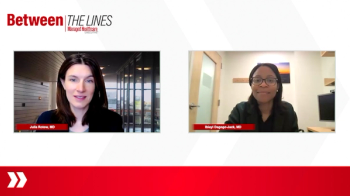
Reducing Barriers to PrEP Therapy
Carl Schmid discusses ideas on how to minimize barriers and increase overall use of PrEP therapy.
Episodes in this series

Carl Schmid: It’s important in all aspects of the continuum of care to find patients who need PrEP [pre-exposure prophylaxis], but most important is testing and diagnosis. It’s twofold, because if you’re testing and diagnosing people, you should be doing it in a status-neutral approach. You don’t know if that person has HIV. They don’t know. It’s important to approach the patients that way. PrEP is an avenue, and testing for PrEP is an avenue for treatment as well. The most important is testing people. Then you may find additional people who need treatment for HIV. But all the different parts of the PrEP continuum are important as well, including selecting the drug that’s most fitting for that person. Can they take a drug every single day? Is it better to have a long-acting drug for that person? Adherence is important as well. All aspects of the continuum of care are extremely important, but I like favoring the testing because you could get people onto treatment as well.
It’s unfortunate that PrEP uptake hasn’t been where it needs to be, particularly in the Black and Latino communities and among Black women. A lot of people don’t even know that PrEP exists. That’s our problem. Women in particular don’t know that PrEP is also for them. There’s a lack of awareness. We have a lot of work to do on that. Usually you take a drug because you’re sick. You’re not sick if you’re taking PrEP. You also have to take it every single day, but that’s changing with long-acting PrEP.
People think that it may cost them money. They don’t know that there are free drug programs where there’s no cost-sharing if you have private insurance. A lot of providers aren’t offering PrEP as they should, particularly in the South. There are a lot of reasons why PrEP uptake isn’t where it should be. I have some ideas on how we can improve that. One of the things I’d start with is providers. There’s still a lot of stigma among providers talking about HIV, sex, or gay sex, particularly in the South and among the communities that are most impacted. We have a lot of work to do. There’s no massive educational campaign focusing on PrEP right now.
People don’t even know that PrEP exists. The people who should be taking it, the younger people, don’t think HIV is a problem anymore. We know that’s not true, with about 38,000 new infections every single year. Another misconception that people have is that it costs money. We know that’s not true these days. Because of private insurance, there’s no cost-sharing. There are free drug programs as well. Another gap is that women don’t know that PrEP is available for them. Another major gap is that aside from taking the drug, you also have to be continually monitored by your provider and have ongoing tests to check that you remain HIV-negative, check your kidney and bone density, and have STD testing. That’s another place where knowledge is lacking, where people don’t know about all these things. That it’s not just the drug, there’s ongoing clinical care as well.
This transcript has been edited for clarity.
Newsletter
Get the latest industry news, event updates, and more from Managed healthcare Executive.
























































